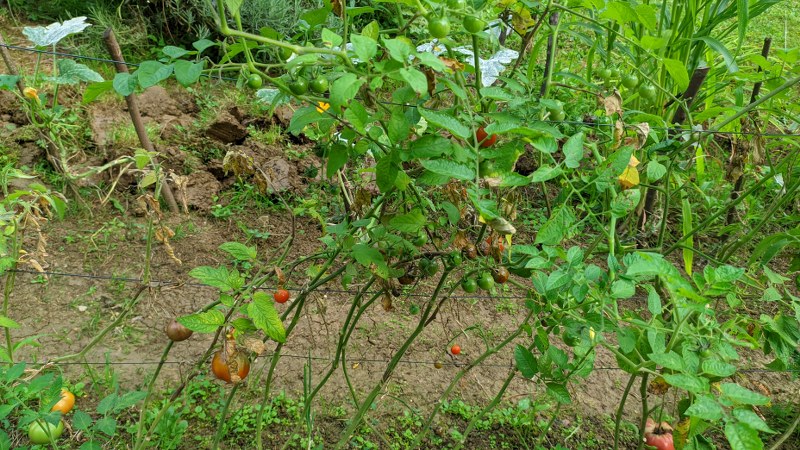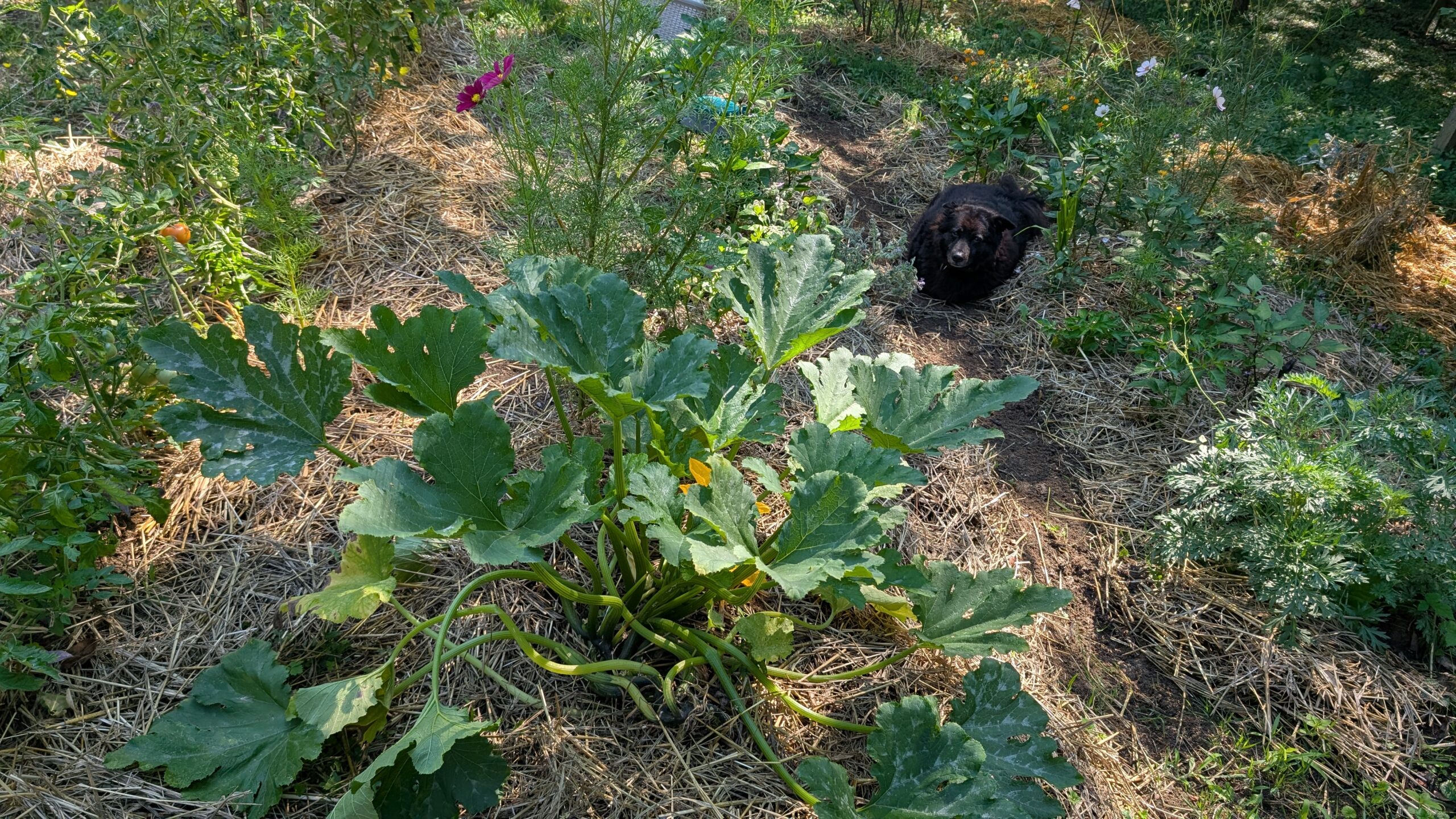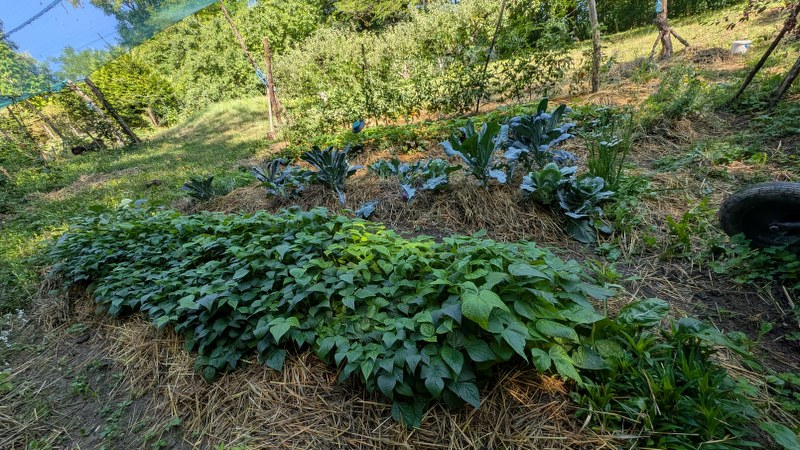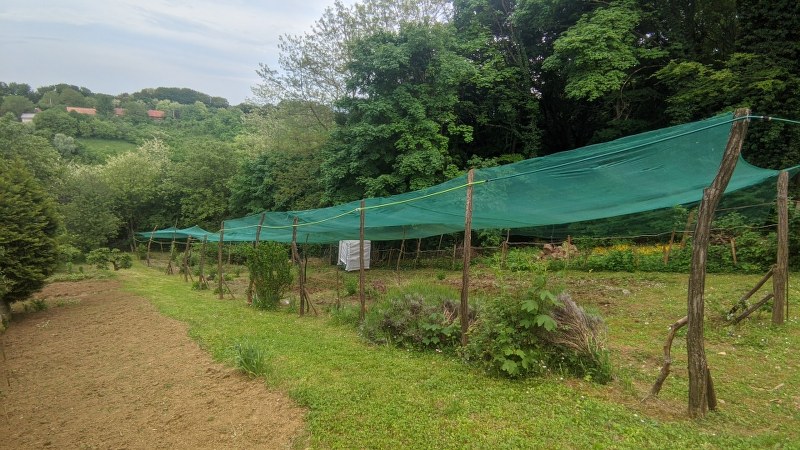Late blight(Phytophthora infestans) is a fungal disease that can’t be cured. Once the plant is infected we can only delay the symptoms enough for the plants to produce fruits. While there are many fungicides available, people who use natural methods are in a difficult situation. But, with a couple of easy tricks, we can slow down the progress enough to grow colorful tomatoes.

Late blight prevention during the season
Natural prevention of Late blight always starts with good pruning. The blight loves high moisture which accumulates in plants with lots of branches and removing the suckers, branches, and leaves will provide ventilation for the plant.

Another great way to give the plant some air is planting them on climbing wires. This way tomatoes will get air from every side and moisture won’t build up in the middle of the plant. The perfect example of this is this year’s tomatoes. I’ve planted most on a climbing wire and a couple of test ones in the orchard. Despite the extreme rain, fog, and cold we had this summer, the tomatoes on wires lasted much longer than the ones on the poles. The pole tomatoes caught blight in July and despite the pruning plants were fully infected in just 3 days. The ones on the wire survived until the end of August.

Pruning leaves and tops
When the plants are already infected the only thing we can do is delay the infection until we get the chance to harvest the fruits. Baking soda or milk can help delay the infection but only when the infected area isn’t too big. If the plants were pruned properly there shouldn’t be a problem with detecting and removing the infected leaves.
But, since the plant is already infected and we need a quick ripe of the fruits it is also a good thing to make sure that the plant directs all its energy to fruit ripening. The best way to achieve this is to remove all of the leaves from at least half of the plant and cut the tops of the branches. The leaves will only stop the sun from reaching the fruits, removing them will make the fruits ripe faster and that’s all we need from a blight-infected plant.


Cutting the tops of the tomatoes will give the plant the instruction to stop growing and ripe the fruits. Still, the plants will try to grow suckers and new branches, so if you want to remove the tops be sure to remove all the leaves and empty branches.

Early harvest
If the blight starts progressing quickly there’s always the chance to harvest green fruits. Tomatoes can ripen even off the plant. If the fruit grows to its full size it will ripe even in a dark place.
Still, the best way to let the tomatoes ripe is to store them in a warm and lighted area. I leave my tomatoes on the balcony table. This is a very warm and lighted area where my tomatoes ripen in just a couple of days. I do keep them behind the curtain since the sun on the balcony would cook the fruits, but that’s only due to the fact that my balcony gets 12 hours of scorching sun. If the tomatoes are in a partly shaded place there’s no need for any protection.

With all these methods I managed to harvest 80% of the tomatoes from this year. Yes, there have been some fruits that were infected. But still, most of them were good enough for cooking, once I’ve removed the infected spots. This has been a very difficult summer and the results which we got using these methods are excellent.





Leave a Reply